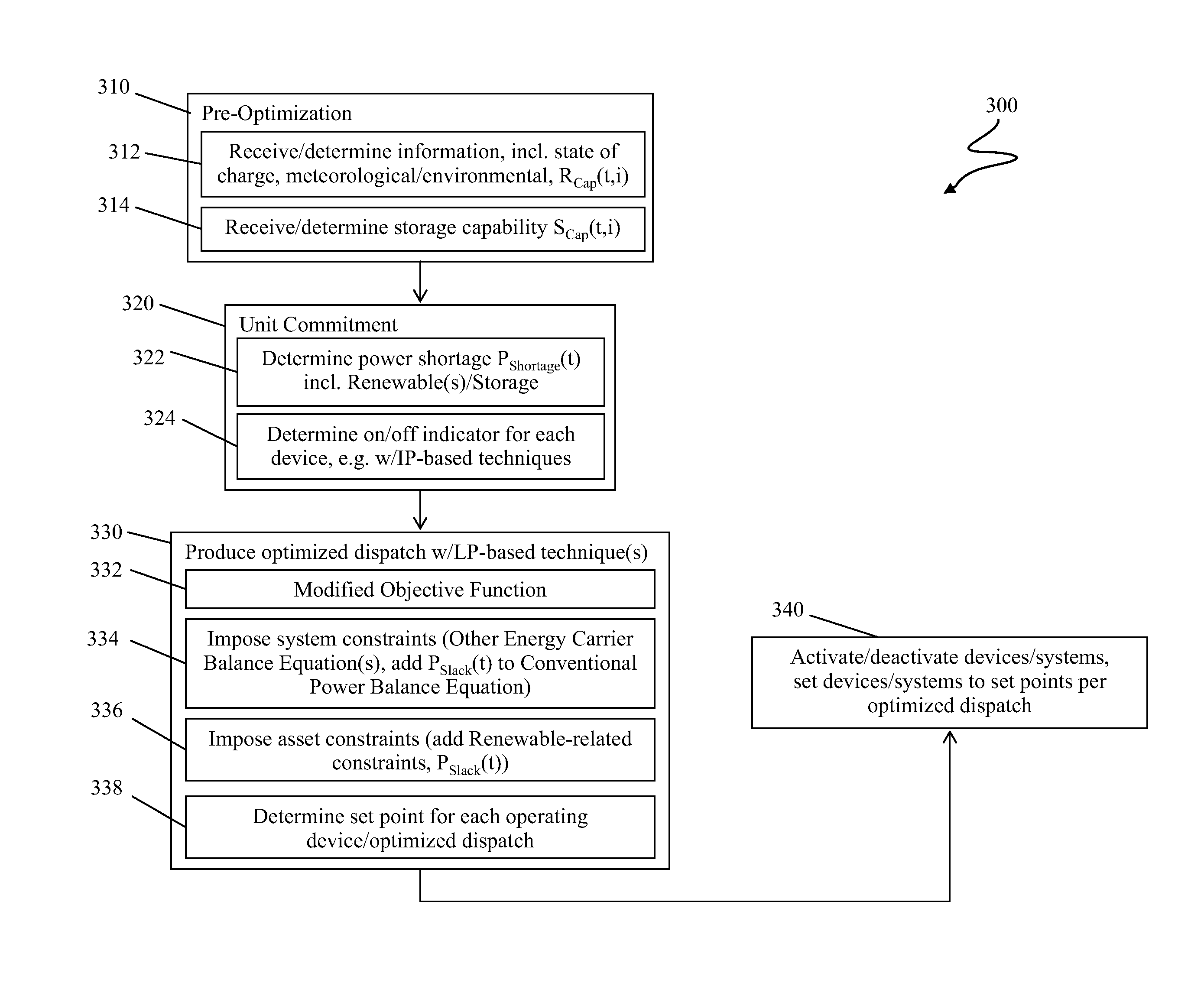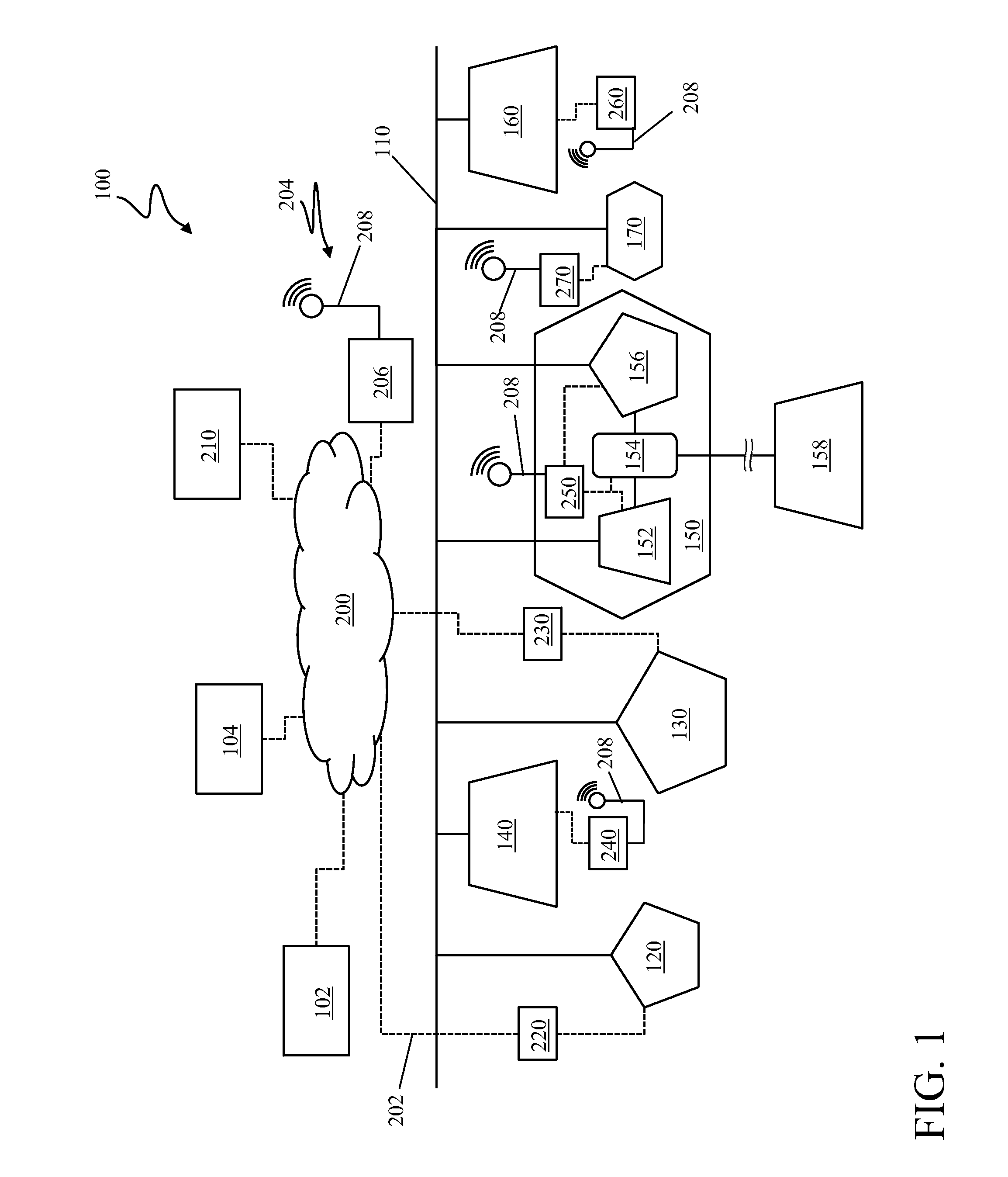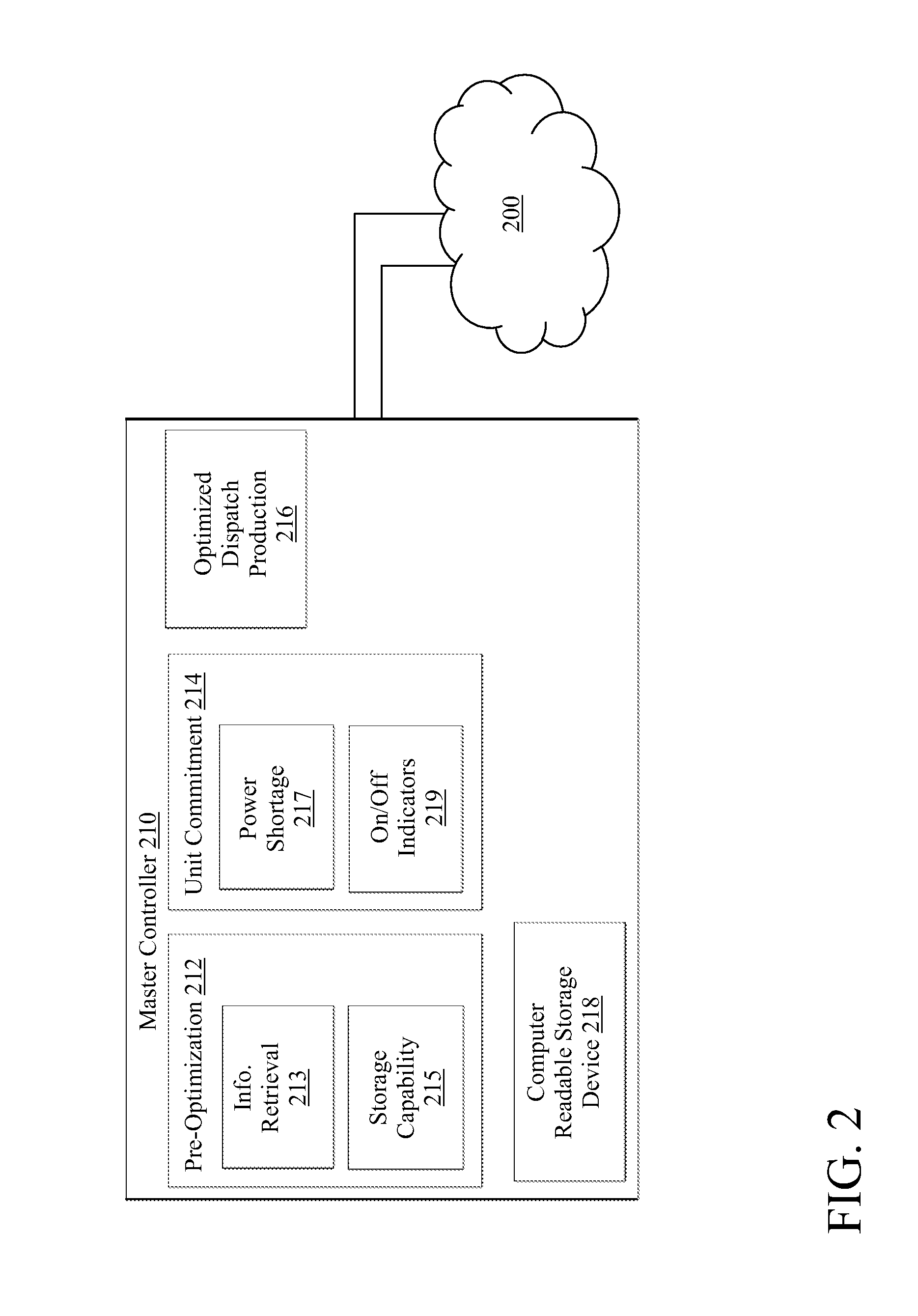Power generation optimization in microgrid including renewable power source
a micro-grid and power generation technology, applied in the field of power generation optimization, can solve the problems of inability to solve optimization problems, inability to accurately represent the behavior of many models assuming isochronous power generation, and the inability to optimize with the current available computational algorithms and resources
- Summary
- Abstract
- Description
- Claims
- Application Information
AI Technical Summary
Benefits of technology
Problems solved by technology
Method used
Image
Examples
Embodiment Construction
[0016]As indicated above, typical microgrid dispatch optimization techniques do not treat renewable power sources as isochronous sources. Rather, renewable sources are typically treated as stochastic sources with only forecasted power generation being taken into account due to strong fluctuations in power generation. However, some renewable power sources, such as hydroelectric power generators, are less intermittent and so may be operated in or treated as operating in an isochronous mode more often to meet microgrid operational constraints. Because renewable power generation sources may not provide a fixed upper bound of power generation in the manner that most non-renewable power generation sources do, a dispatch technique should be reformulated to consider such less-intermittent renewable power generation sources as isochronous sources.
[0017]Renewable sources may, for example, be categorized as dispatchable and non-dispatchable. Wind, solar, and hydroelectric renewable sources wit...
PUM
 Login to View More
Login to View More Abstract
Description
Claims
Application Information
 Login to View More
Login to View More - R&D
- Intellectual Property
- Life Sciences
- Materials
- Tech Scout
- Unparalleled Data Quality
- Higher Quality Content
- 60% Fewer Hallucinations
Browse by: Latest US Patents, China's latest patents, Technical Efficacy Thesaurus, Application Domain, Technology Topic, Popular Technical Reports.
© 2025 PatSnap. All rights reserved.Legal|Privacy policy|Modern Slavery Act Transparency Statement|Sitemap|About US| Contact US: help@patsnap.com



